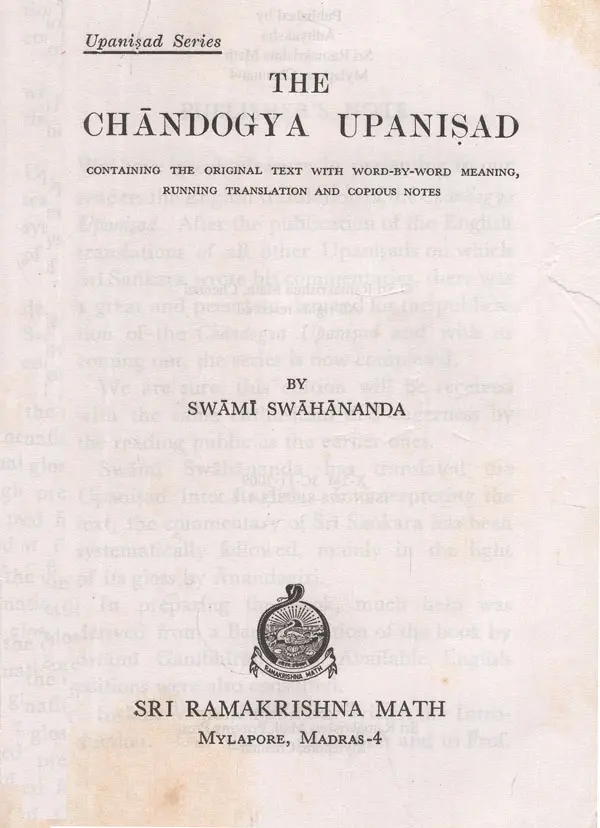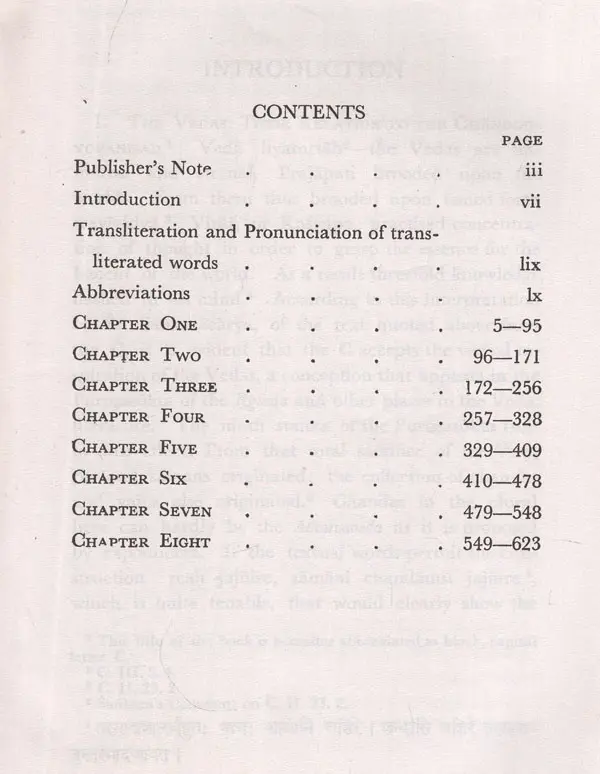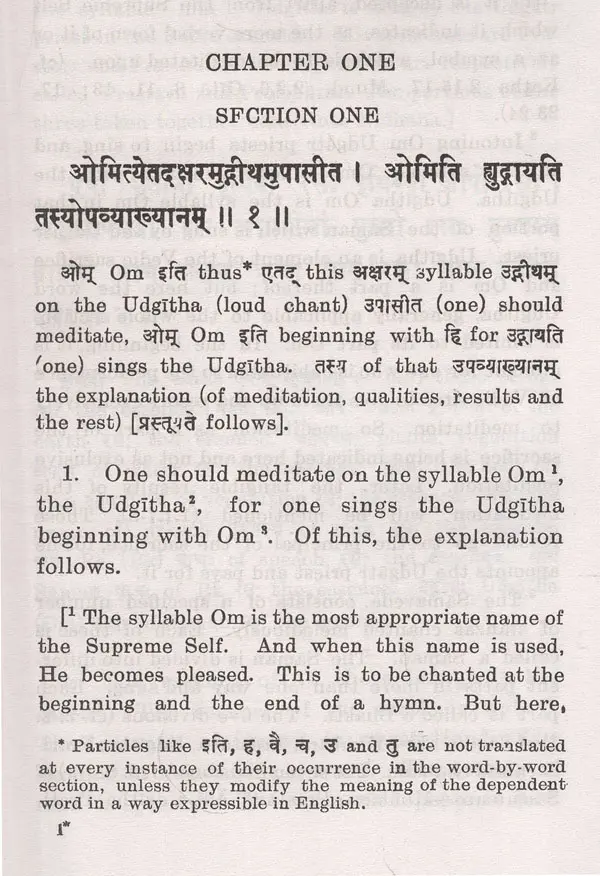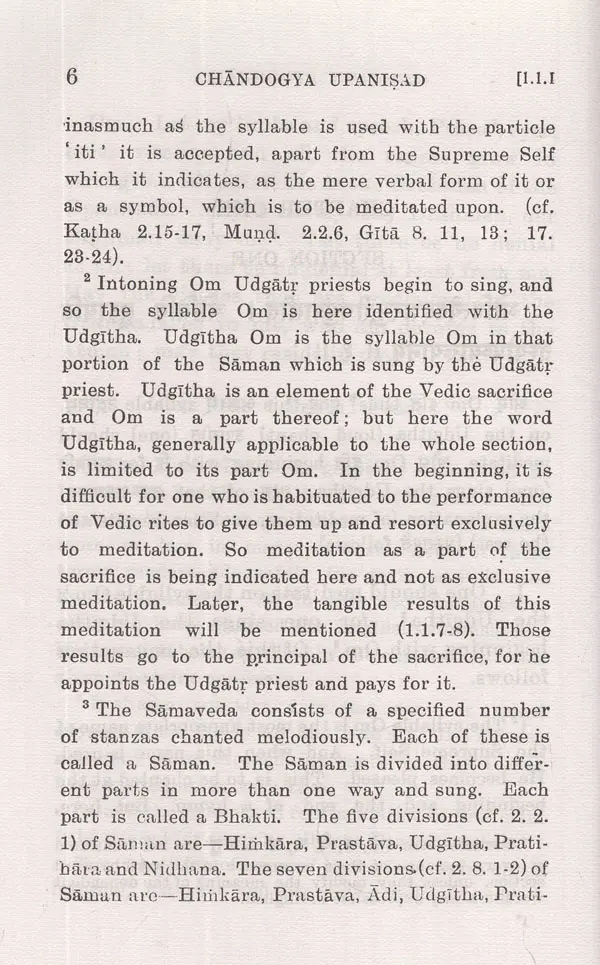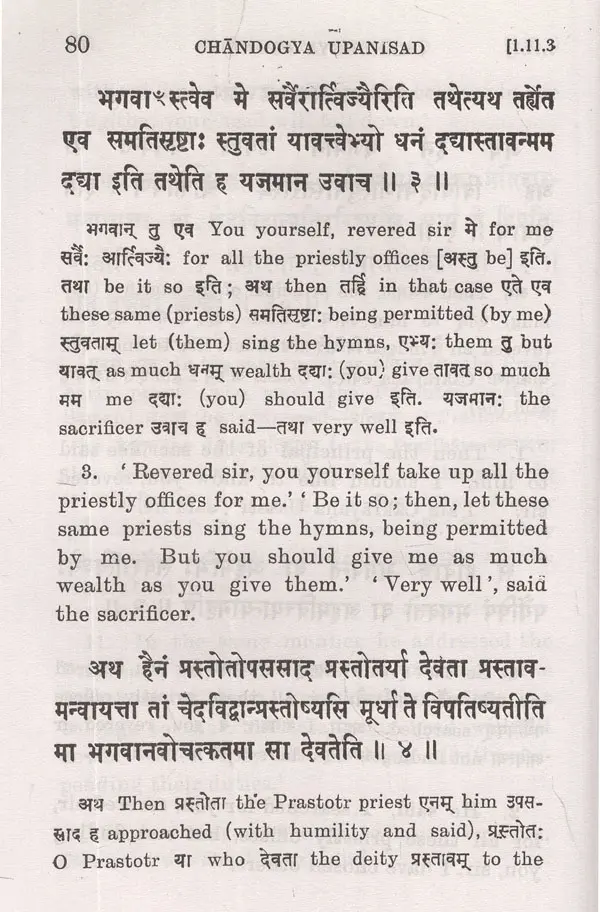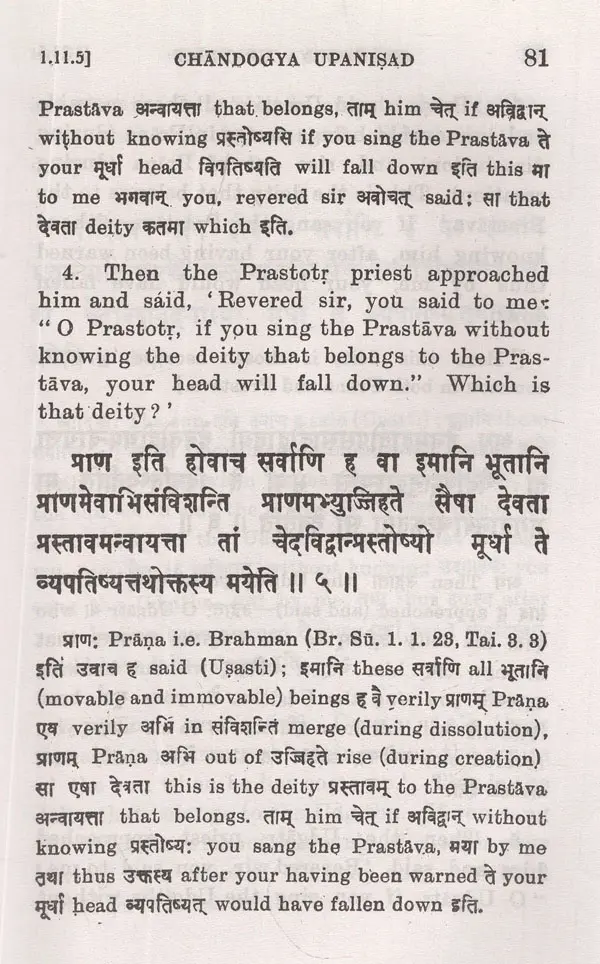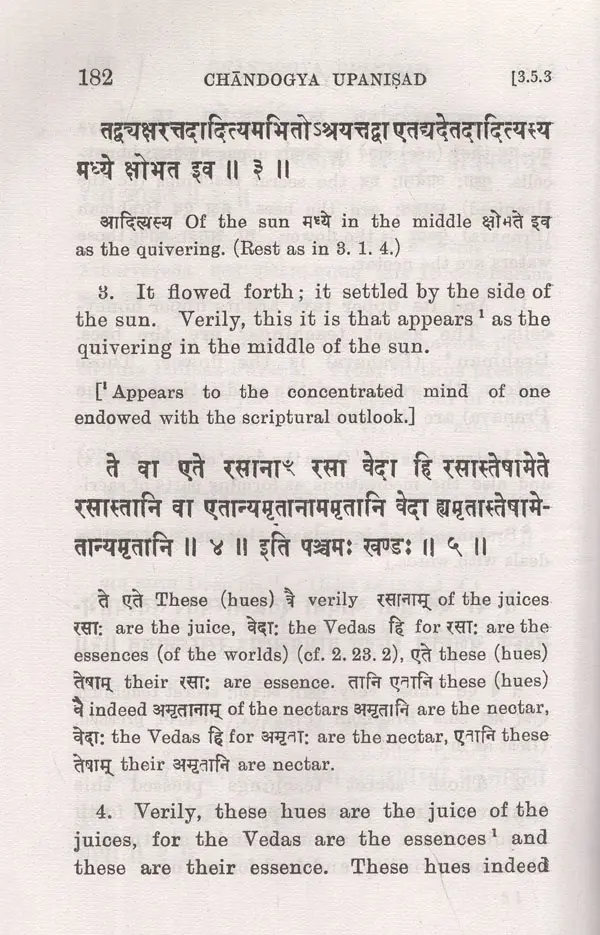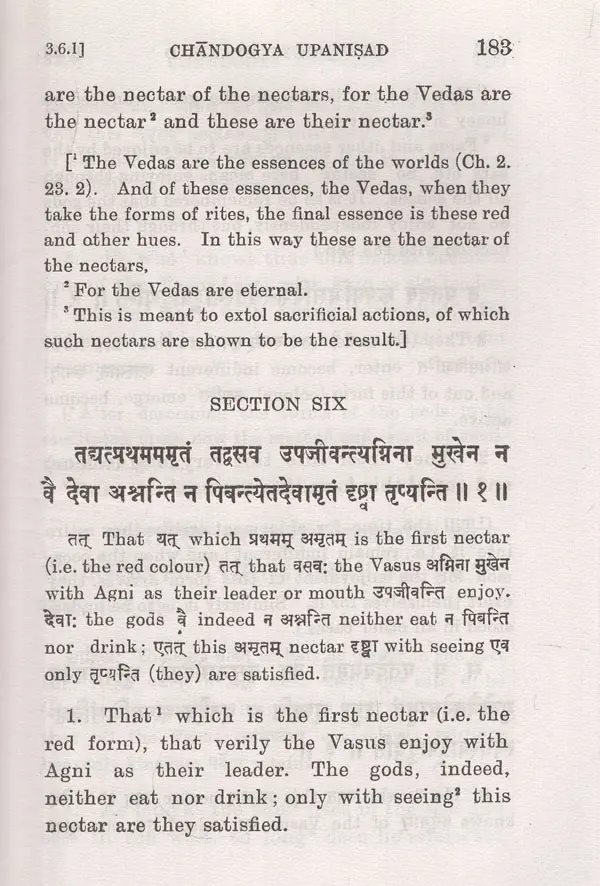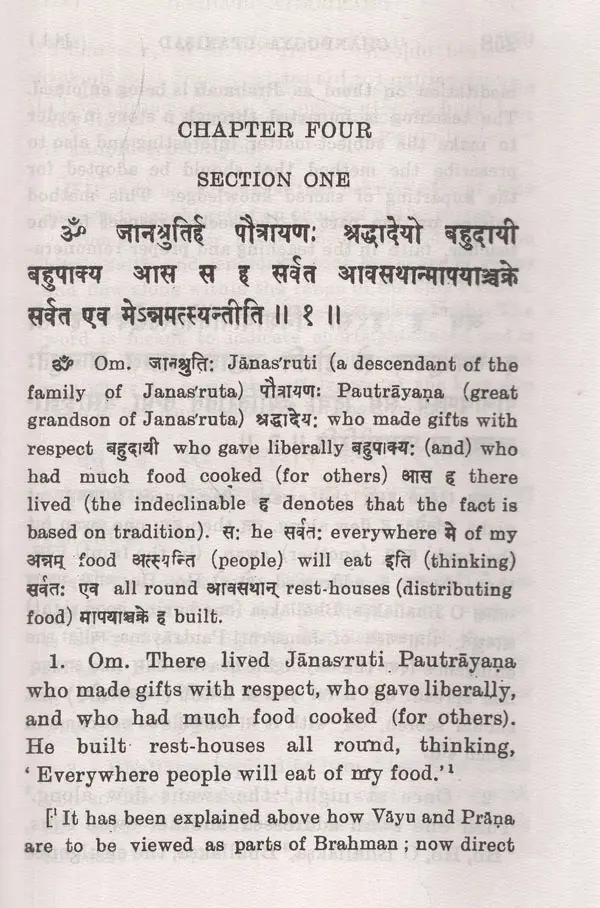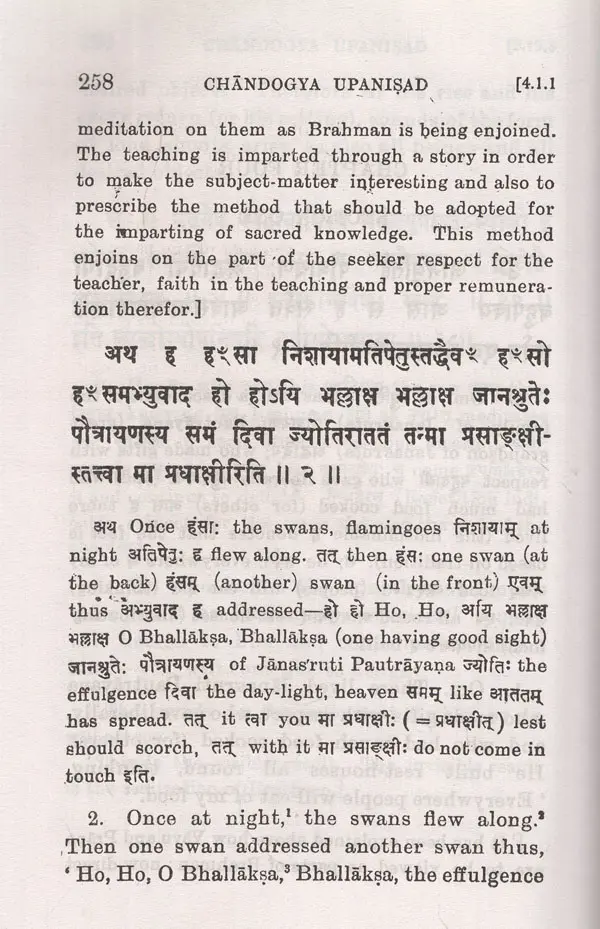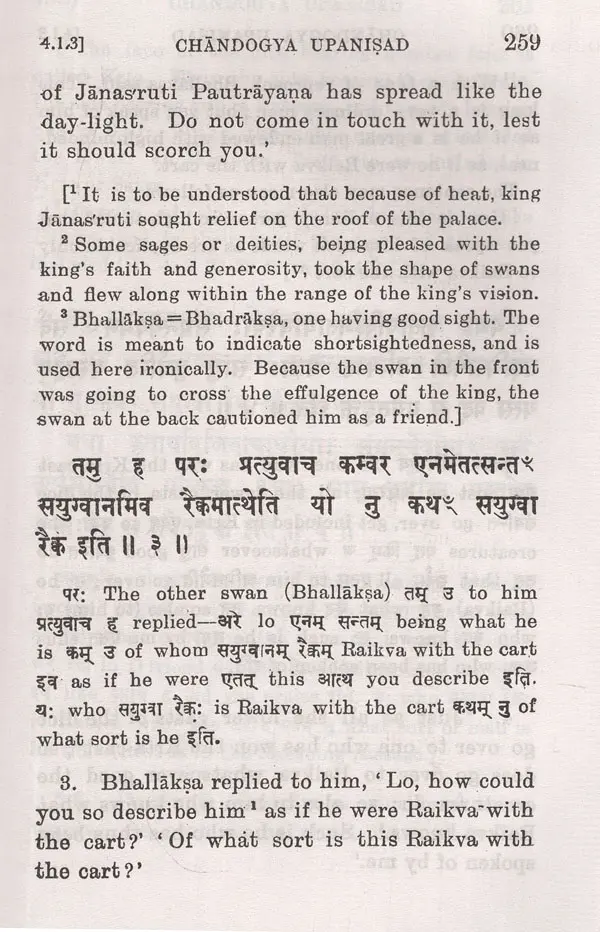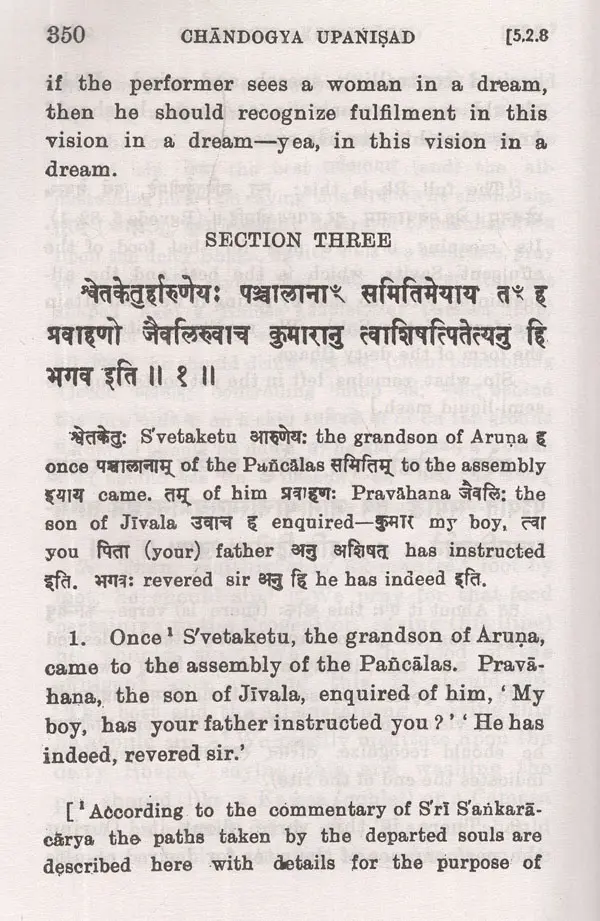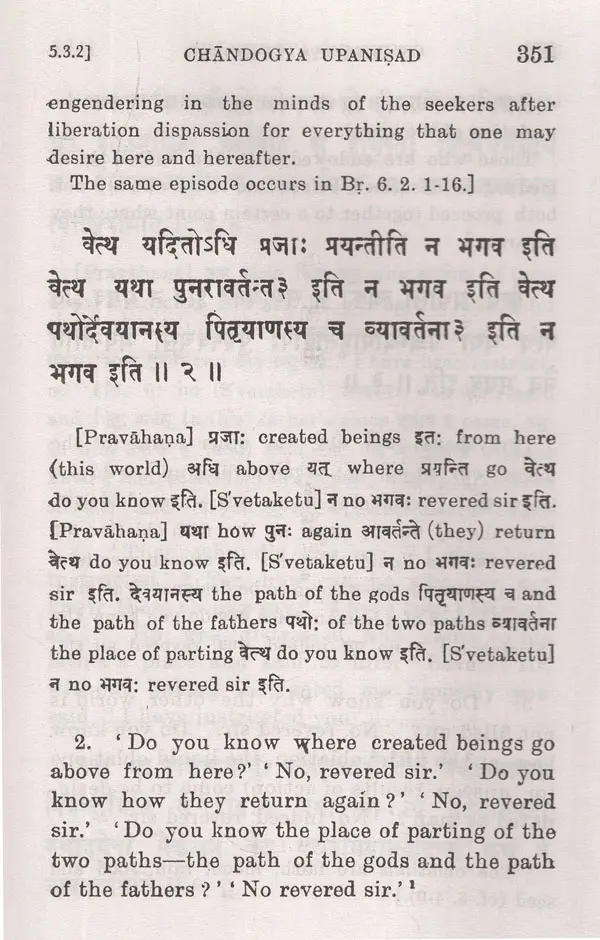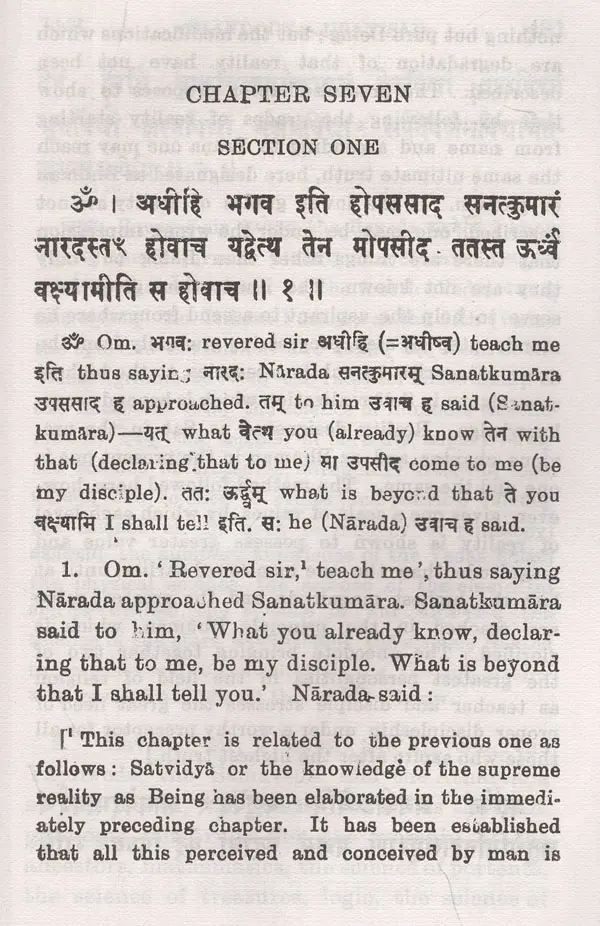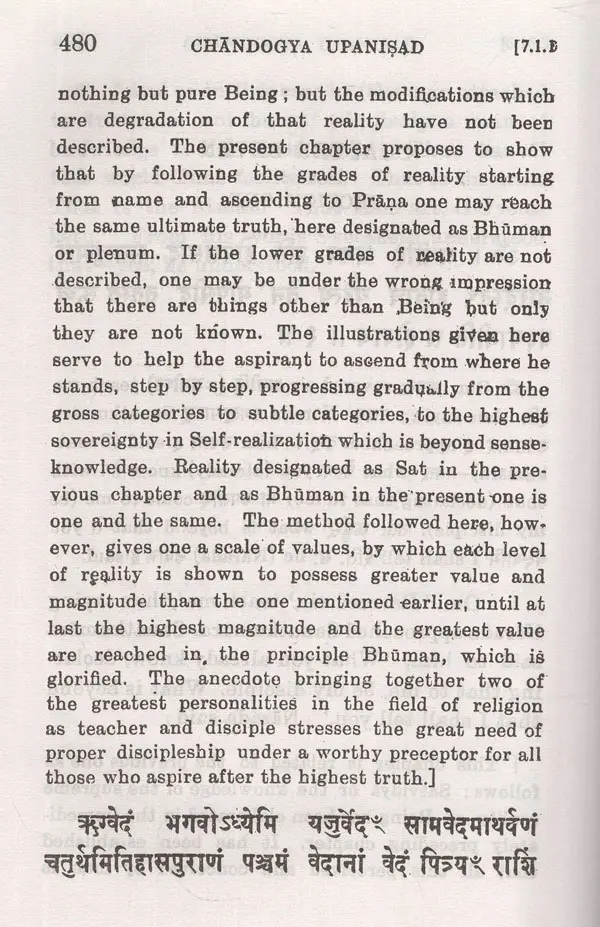
Chandogya Upanisad- Containing The Original Text With Word- By- Word Meaning, Running Translation and Copious Notes (An Old and Rare Book)
Book Specification
| Item Code: | UAO809 |
| Author: | Swahananda |
| Publisher: | Sri Ramakrishna Math, Chennai |
| Language: | Sanskrit Text with English Translation |
| Edition: | 2009 |
| ISBN: | 9788178234182 |
| Pages: | 623 |
| Cover: | PAPERBACK |
| Other Details | 7.00 X 5.00 inch |
| Weight | 450 gm |
Book Description
1. THE VEDAS: THEIR RELATION TO THE CHANDOG YOPANISAD: Veda hyamrtah the Vedas are immortal and eternal. Prajapati brooded upon the worlds. From them thus brooded upon issued forth trayividya. Virat, or Kasyapa, practised concentration of thought in order to grasp the essence for the benefit of the world. As a result threefold knowledge flashed in his mind. According to this interpretation by Sri Sankaracarya, of the text quoted above from the C, it is evident that the C accepts the verbal inspiration of the Vedas, a conception that appears in the Purusasukta of the Rgveda and other places in the Vedic - literature. The ninth stanza of the Purusasukta runs to this effect: From that total sacrifice of the Virat rks and samans originated; the collection of chandas and yajus also originated. Chandas in the plural here can hardly be the Atharvaveda as it is proposed by expounders. If the textual words permit the construction 'rcah jajnire, samani chandamsi jajnire', which is quite tenable, that would clearly show the identity of saman and chandas, the appositional use being indicative of words as well as the tune of the Samaveda. The word chandas is usually traced to the root chad' meaning to cover; it can very well be a derivative of the root' chand' having the meaning to please'. The melody of saman is certainly delight. ful to the ear and the heart, and so the Samaveda is called chandas in this sense. The sruti affirms this: svargo vai lokah Samavedah- the Samaveda is verily the heavenly world. Heavenly melody lifts one to the highest divine experience in the opinion of Yajnavalkya: He who knows the actual play of Vina, an expert in the science of melody and time, easily attains to Brahman. This pre-eminence of the Samaveda can very well be the purport of Sri Krsna's declaration 'I am the Samaveda among the Vedas. Patanjali, too, concedes the pride of place to the Samaveda by putting it first in order while enumerating the Vedas which the ancients used to learn by imitating the intonations of the preceptor. All these facts lead us to the conclusion that the Samaveda merited special recognition for its musical form, spiritual import and liturgical significance as revealed in great acts of worship like Jyotistoma connected with it.
**Contents and Sample Pages**
